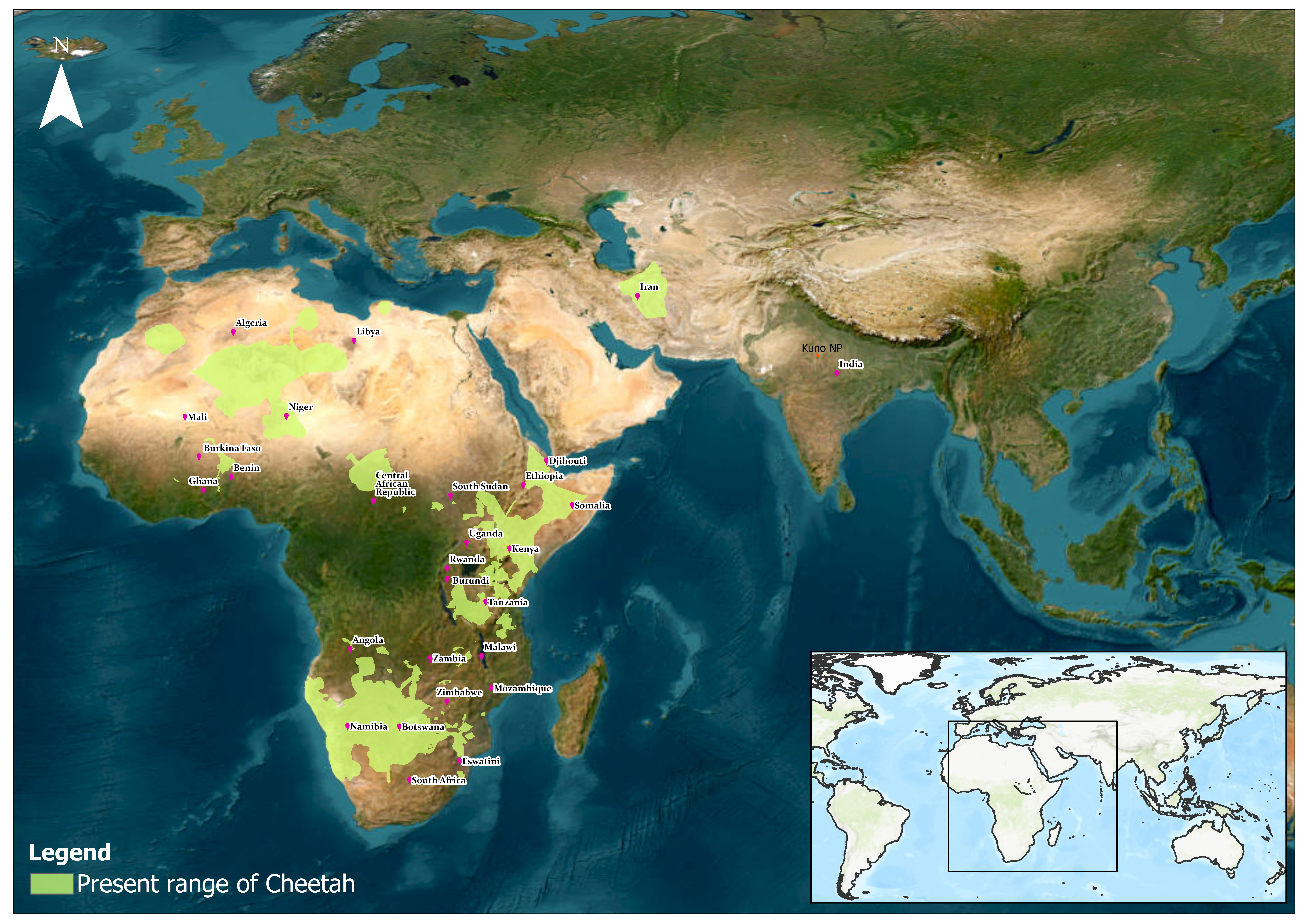Phylum: Chordata
Class: Mammalia
Order: Carnivora
Family: Felidae
Genus and species: Acinonyx jubatus
The cheetah is a large feline recognized for its speed and distinctive physical characteristics. The name “Cheetah” is derived from a Sanskrit word “Chitra” means spots. The cheetah and humans have coexisted since at least 3000 BCE, when an official seal from the Sumerians included a hooded, leashed cheetah on its head. The cheetah was regarded as a royal symbol at this time in Egypt, where it took the form of the cat goddess Mafdet. Many well-known historical personalities, like Genghis Khan, Charlemagne, and Akbar the Great of India, kept cheetahs as pets.
.jpg)


